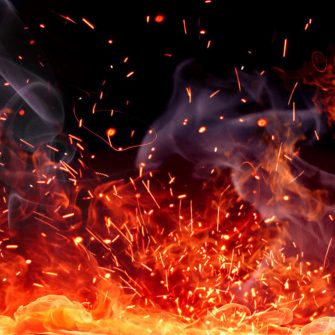Ember Storms explained

Embers are small, hot, smouldering fragments of solid fuel that can travel long distances with the wind and ignite other fuel sources, such as dry grass, leaves, wooden structures and other flammable objects.
Embers from bushfires can travel through the air or along the ground, making them almost impossible to stop and highly unpredictable.
There have been reports of embers travelling up to 20 kilometres ahead of a fire front and igniting spot fires. Embers are the most common cause of house fires during bushfires.
Much of the current science about embers assumes they travel great distances in the air, whereas observation shows many of them move along the ground.
UNSW Canberra researchers are undertaking research that is providing new insights into how embers move and how they interact with urban settings – the areas where there is the greatest risk of loss of life and property.
The researchers are using computer simulations to analyse the airborne and ground-based movement of embers, respectively known as the lofting and creeping processes.
Equations for factors like airflow and heat transfer that also take into account specific details such as terrain and combustible material are used to create the highly accurate computer models.
These physics-based simulations will give us the most faithful representation of how a fire will spread, and it is these fire spread models, created by thousands of processing hours on a supercomputer, that have proven to be highly accurate when compared to real bushfires.
By incorporating these findings into the planning of new suburbs, researchers hope future buildings will be more resilient during bushfires.
The simulations include different suburb designs to discover what makes a suburb most resilient to ember attack. UNSW Canberra is currently working with ACT Government partners to put the discoveries into practice.
Ultimately, it is hoped these computer models can help to save homes, and potentially lives, during bushfires.
Associated schools, institutes & centres
Pioneering world-class research to sustain our future
From heatwave modelling and tracking extreme climate events to developing low-cost, low-energy water purification processes for remote and developing communities, see how our scientists are creating innovative solutions to the biggest issues facing our planet.
